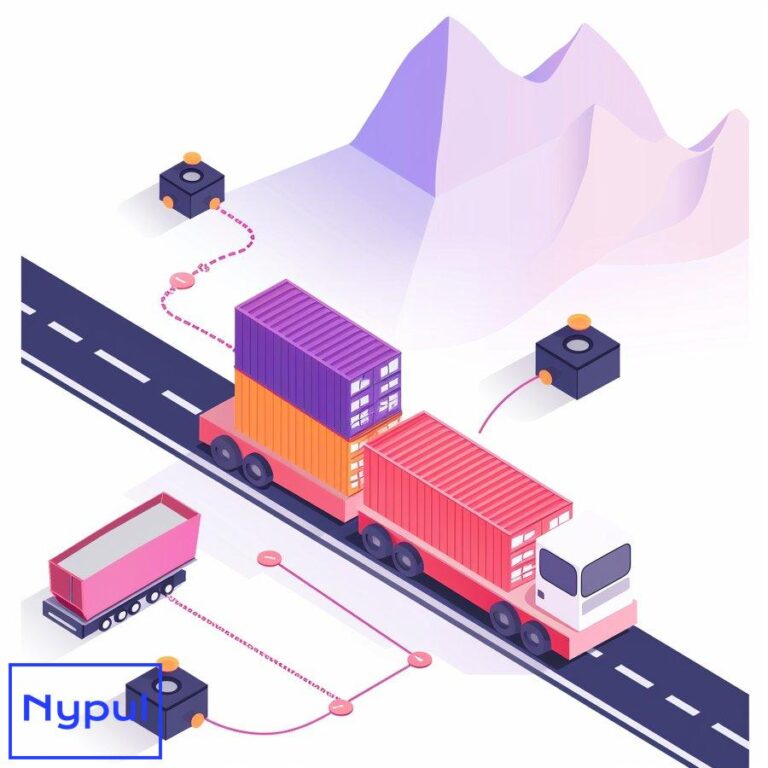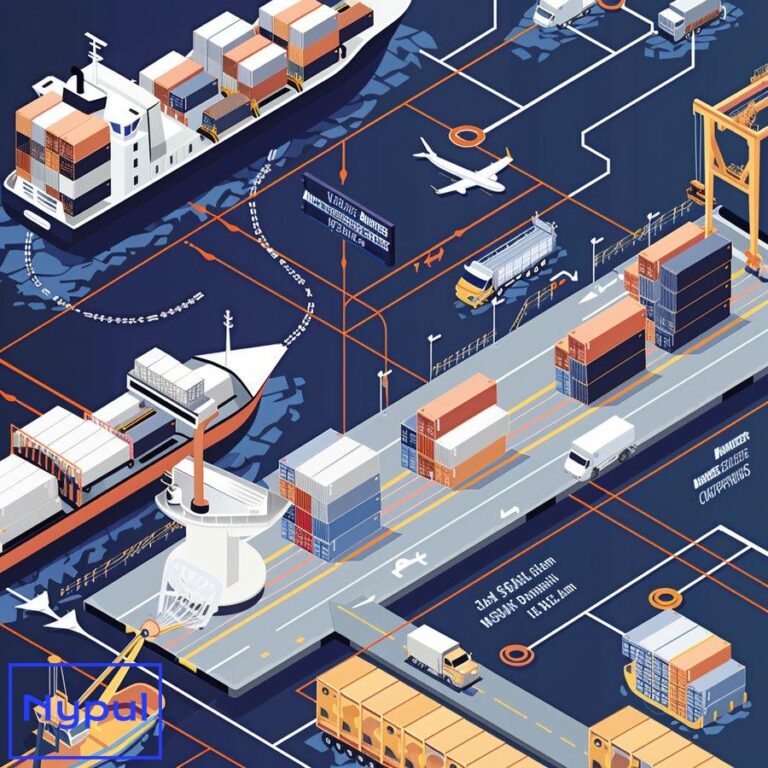How Can We Optimize Fuel Efficiency
Why is fuel efficiency crucial for drayage and logistics?
Fuel efficiency stands as a cornerstone of successful drayage and logistics operations. The transportation sector, particularly drayage services, relies heavily on fuel consumption to move goods from ports to inland destinations. As fuel costs fluctuate and environmental concerns grow, optimizing fuel efficiency becomes not just a financial imperative but also an ecological responsibility.
Drayage companies face unique challenges in managing fuel consumption. Short-haul trips, frequent stops, and varying load weights all contribute to higher fuel usage compared to long-haul trucking. This makes fuel efficiency a critical factor in maintaining competitive edge and profitability.
Cost Reduction
Fuel represents a significant portion of operational expenses for drayage and logistics companies. By improving fuel efficiency, businesses can substantially reduce their fuel costs. Even small improvements in miles per gallon (MPG) can translate to significant savings when applied across an entire fleet.
Consider the following example:
| Fleet Size | Annual Mileage per Truck | Current MPG | Improved MPG | Annual Fuel Savings per Truck | Total Annual Fleet Savings |
|---|---|---|---|---|---|
| 50 trucks | 50,000 miles | 6 MPG | 7 MPG | $3,571 | $178,550 |
Assumptions: Diesel price at $3.50 per gallon
This table illustrates how a modest 1 MPG improvement can result in substantial cost savings for a drayage fleet.
Environmental Impact
Fuel efficiency directly correlates with reduced emissions. As global efforts to combat climate change intensify, drayage and logistics companies face increasing pressure to minimize their carbon footprint. Improved fuel efficiency leads to lower greenhouse gas emissions, helping companies meet environmental regulations and corporate sustainability goals.
Competitive Advantage
In an industry where margins can be tight, fuel efficiency can provide a significant competitive advantage. Companies that optimize their fuel consumption can offer more competitive pricing while maintaining profitability. This efficiency can also be a selling point for environmentally conscious clients looking to reduce their supply chain emissions.
Operational Resilience
Fuel-efficient operations are more resilient to market fluctuations. When fuel prices spike, companies with optimized fuel consumption are better positioned to weather the storm without significant impacts on their bottom line or service quality.
Regulatory Compliance
As governments worldwide implement stricter emissions standards, fuel efficiency becomes crucial for regulatory compliance. Companies that proactively improve their fuel efficiency are better prepared to meet current and future regulations without costly last-minute adaptations.
Fuel efficiency in drayage and logistics is not just about saving money—it’s about building a sustainable, resilient, and competitive business model. As we delve deeper into specific strategies and technologies, remember that every drop of fuel saved contributes to a more efficient, environmentally friendly, and profitable operation.
How do vehicle selection and design impact fuel consumption?
Vehicle selection and design play pivotal roles in determining fuel consumption for drayage and logistics operations. The right choices in these areas can lead to significant improvements in fuel efficiency, ultimately impacting the bottom line and environmental footprint of the entire fleet.
Vehicle Type and Size
Selecting the appropriate vehicle type and size for specific drayage tasks is crucial. Oversized vehicles for small loads waste fuel, while undersized vehicles may require multiple trips, negating potential fuel savings.
Considerations for vehicle selection:
Load capacity: Match vehicle size to typical load weights to optimize fuel efficiency.
Route characteristics: Consider factors like terrain and distance when choosing between different vehicle types.
Frequency of stops: For routes with frequent stops, smaller, more agile vehicles may be more fuel-efficient.
Aerodynamic Design
Aerodynamics significantly impact fuel consumption, especially at higher speeds. Modern truck designs incorporate various features to reduce air resistance and improve fuel efficiency.
Key aerodynamic features:
Cab design: Streamlined cab shapes reduce air resistance.
Fairings: Roof fairings and side skirts help direct airflow around the vehicle.
Gap reducers: Minimizing the gap between the tractor and trailer reduces turbulence.
Trailer tails: Extending the rear of the trailer can improve aerodynamics.
The impact of aerodynamic improvements can be substantial. According to the U.S. Department of Energy, aerodynamic devices can improve fuel economy by up to 15% for long-haul trucks. While drayage operations typically involve shorter distances, these improvements can still yield significant benefits, especially for routes that include highway travel.
Weight Reduction
Vehicle weight directly affects fuel consumption. Lighter vehicles require less energy to move, resulting in improved fuel efficiency.
Strategies for weight reduction:
Material selection: Use of lightweight materials like aluminum or composite materials in vehicle construction.
Component optimization: Redesigning parts to maintain strength while reducing weight.
Unnecessary equipment removal: Eliminating non-essential items from the vehicle.
A general rule of thumb is that a 10% reduction in vehicle weight can lead to a 5-7% improvement in fuel economy. For drayage operations, where loads can vary significantly, starting with a lighter base vehicle provides more flexibility and efficiency across different cargo weights.
Alternative Powertrains
The selection of powertrain technology can have a profound impact on fuel efficiency and emissions.
Powertrain options:
Conventional diesel: Still widely used, modern diesel engines offer improved efficiency over older models.
Hybrid systems: Combining diesel engines with electric motors can significantly improve fuel efficiency, especially in urban environments with frequent stops.
All-electric: For shorter drayage routes, all-electric vehicles can eliminate fuel consumption entirely, though range and charging infrastructure must be considered.
Hydrogen fuel cell: Emerging technology that offers zero emissions and potentially quick refueling times.
The choice of powertrain depends on various factors including route characteristics, available infrastructure, and operational requirements. For instance, hybrid systems might be ideal for urban drayage operations with frequent stops, while conventional diesel might still be the best choice for longer routes without charging infrastructure.
Auxiliary Power Units (APUs)
For drayage operations that involve waiting periods, such as at ports or distribution centers, APUs can significantly reduce fuel consumption by providing power for climate control and other systems without idling the main engine.
Benefits of APUs:
Reduced idle time: Can cut fuel consumption during non-driving periods by up to 80%.
Extended engine life: Less idling means less wear on the main engine.
Compliance with anti-idling regulations: Many jurisdictions have strict anti-idling laws that APUs can help fleets comply with.
Customization and Specialization
Tailoring vehicles to specific drayage needs can lead to significant fuel efficiency improvements. This might involve:
Custom trailer designs: Optimized for specific cargo types to maximize load efficiency.
Modular systems: Allowing for quick configuration changes to match varying load requirements.
Route-specific modifications: Adapting vehicles for particular route challenges, such as steep grades or frequent stops.
By carefully considering these aspects of vehicle selection and design, drayage and logistics companies can significantly reduce their fuel consumption. The initial investment in optimized vehicles often pays dividends through reduced operational costs and improved environmental performance. As technology continues to advance, staying informed about the latest developments in vehicle design and alternative powertrains will be crucial for maintaining a competitive edge in the industry.
What engine optimization techniques can improve fuel efficiency?
Engine optimization is a critical aspect of improving fuel efficiency in drayage and logistics operations. By fine-tuning engine performance, companies can achieve significant reductions in fuel consumption without necessarily investing in new vehicles. Here are several key techniques and technologies that can enhance engine efficiency:
Advanced Engine Control Systems
Modern engine control units (ECUs) use sophisticated algorithms to optimize fuel injection, timing, and other parameters in real-time. These systems can significantly improve fuel efficiency by ensuring the engine operates at peak performance under varying conditions.
Key features of advanced ECUs:
Adaptive learning: ECUs that learn from driving patterns and adjust engine parameters accordingly.
Real-time optimization: Continuous adjustment of fuel injection and timing based on current operating conditions.
Predictive algorithms: Using data from various sensors to anticipate and prepare for changes in engine load or speed.
Implementing or upgrading to advanced ECUs can lead to fuel efficiency improvements of 3-5% or more, depending on the specific system and how it’s implemented.
Variable Valve Timing (VVT)
VVT systems allow for dynamic adjustment of valve opening and closing times, optimizing engine performance across different speeds and loads. This technology can significantly improve both power output and fuel efficiency.
Benefits of VVT:
Improved low-end torque: Enhances efficiency during the frequent starts and stops common in drayage operations.
Reduced pumping losses: Optimizes air intake and exhaust, reducing energy waste.
Better fuel atomization: Improves combustion efficiency, especially at lower engine speeds.
VVT systems can improve fuel efficiency by 3-8%, with the added benefit of improved engine performance.
Turbocharging and Supercharging
Forced induction systems like turbochargers and superchargers can significantly boost engine efficiency, especially when combined with downsizing strategies.
Advantages of forced induction:
Increased power density: Allows for smaller, more efficient engines without sacrificing power.
Improved low-end torque: Enhances performance in stop-and-go traffic common in drayage operations.
Better altitude performance: Maintains efficiency in varying geographic conditions.
When properly implemented, turbocharging or supercharging can improve fuel efficiency by 6-10% or more, particularly in downsized engines.
Friction Reduction Technologies
Reducing internal engine friction can lead to substantial improvements in fuel efficiency. Various technologies and techniques can be employed to minimize energy losses due to friction.
Friction reduction strategies:
Low-friction coatings: Application of specialized coatings on engine components to reduce friction.
Improved lubricants: Use of advanced synthetic oils that reduce friction and improve efficiency.
Optimized piston ring design: Reducing friction between piston rings and cylinder walls.
Collectively, these friction reduction techniques can improve fuel efficiency by 2-4%.
Exhaust Gas Recirculation (EGR)
EGR systems recirculate a portion of exhaust gases back into the engine cylinders, reducing combustion temperatures and improving efficiency.
Benefits of EGR:
Reduced pumping losses: Lowers the energy required to intake fresh air.
Lower combustion temperatures: Reduces heat losses and formation of nitrogen oxides (NOx).
Improved fuel economy: Can increase efficiency by 3-5% when properly implemented.
Cylinder Deactivation
For engines with multiple cylinders, deactivating some cylinders during low-load conditions can significantly improve fuel efficiency.
How cylinder deactivation works:
Load sensing: The system detects when full engine power is not required.
Valve closure: Intake and exhaust valves on selected cylinders are kept closed.
Fuel cut-off: Fuel injection is stopped for the deactivated cylinders.
This technology can improve fuel efficiency by 4-15%, especially in larger engines during highway driving or light load conditions.
Waste Heat Recovery Systems
Capturing and utilizing waste heat from the engine can significantly boost overall efficiency. Technologies like thermoelectric generators or Rankine cycle systems can convert waste heat into usable energy.
Potential applications:
Electrical power generation: Converting waste heat to electricity for vehicle systems.
Cabin heating: Using waste heat for climate control, reducing load on the engine.
Engine preheating: Utilizing recovered heat to warm the engine quickly in cold conditions.
Waste heat recovery systems can improve overall vehicle efficiency by 3-5% or more, depending on the specific technology and implementation.
Smart Cooling Systems
Traditional engine cooling systems often overcool the engine, wasting energy. Smart cooling systems use advanced controls and variable-speed pumps to optimize cooling.
Features of smart cooling systems:
Temperature-based control: Adjusting coolant flow based on actual engine temperature.
Zone-specific cooling: Targeting cooling to specific engine areas as needed.
Reduced parasitic losses: Minimizing energy used by the cooling system itself.
These systems can improve fuel efficiency by 1-3% while also potentially extending engine life through more consistent temperature control.
Implementing these engine optimization techniques can lead to substantial improvements in fuel efficiency for drayage and logistics operations. While some technologies may require significant initial investment, the long-term benefits in fuel savings and reduced emissions can provide a strong return on investment. It’s important to note that the effectiveness of these techniques can vary based on specific operational conditions, vehicle types, and how they are implemented. Therefore, a thorough analysis of operational needs and potential benefits should guide the selection and implementation of these optimization strategies.
How can drivetrain and transmission enhancements boost fuel economy?

Drivetrain and transmission systems play a crucial role in transferring power from the engine to the wheels, significantly impacting overall fuel efficiency. Optimizing these components can lead to substantial improvements in fuel economy for drayage and logistics operations. Let’s explore various enhancements and their potential benefits:
Advanced Transmission Technologies
Modern transmission systems offer numerous features that can enhance fuel efficiency:
Automated Manual Transmissions (AMTs)
AMTs combine the efficiency of manual transmissions with the convenience of automatic shifting. They optimize gear selection based on driving conditions, load, and terrain.
Benefits of AMTs:
Optimal gear selection: Ensures the engine operates in its most efficient range.
Reduced driver fatigue: Automated shifting allows drivers to focus on road conditions.
Improved fuel economy: Can increase efficiency by 2-5% compared to traditional manual transmissions.
Continuously Variable Transmissions (CVTs)
CVTs offer seamless power delivery by continuously adjusting the gear ratio to match engine output with vehicle speed and load.
Advantages of CVTs:
Infinite gear ratios: Keeps the engine at its most efficient RPM range.
Smooth acceleration: Eliminates gear hunting, reducing fuel consumption during acceleration.
Improved efficiency: Can increase fuel economy by 3-8% in suitable applications.
While CVTs are more common in lighter vehicles, advancements are making them viable for heavier drayage applications.
Multi-Speed Transmissions
Increasing the number of gears in a transmission allows for more precise matching of engine speed to load conditions.
Benefits of multi-speed transmissions:
Wider gear ratio spread: Allows for both low-speed power and high-speed efficiency.
Smaller steps between gears: Keeps the engine closer to its optimal operating range.
Improved fuel economy: 8, 9, or 10-speed transmissions can improve efficiency by 2-4% over 6-speed units.
Dual-Clutch Transmissions (DCTs)
DCTs offer quick, seamless gear changes by pre-selecting the next gear, resulting in minimal power interruption during shifts.
Advantages of DCTs:
Rapid gear changes: Reduces power loss during shifting.
Improved efficiency: Can increase fuel economy by 4-6% compared to traditional automatics.
Enhanced performance: Combines efficiency with responsive acceleration.
Drivetrain Optimization
Beyond the transmission, other drivetrain components can be optimized for improved fuel efficiency:
Low-Friction Lubricants
Advanced synthetic lubricants can significantly reduce friction in the transmission, differential, and other drivetrain components.
Benefits of low-friction lubricants:
Reduced energy loss: Less power is wasted overcoming friction.
Improved cold-weather performance: Maintains efficiency in low temperatures.
Extended component life: Reduced wear can lead to longer-lasting drivetrain parts.
Using optimized lubricants can improve overall drivetrain efficiency by 1-2%.
Axle Ratio Optimization
Selecting the appropriate axle ratio for specific operational needs can significantly impact fuel efficiency.
Considerations for axle ratio selection:
Route profile: Higher ratios for highway driving, lower ratios for frequent stops or hilly terrain.
Typical load: Matching the ratio to expected cargo weights.
Engine characteristics: Aligning with the engine’s power and torque curves.
Proper axle ratio selection can improve fuel efficiency by 2-5% when matched to operational needs.
Advanced Differentials
Specialized differentials can improve traction and reduce power loss, especially in challenging conditions.
Types of advanced differentials:
Limited-slip differentials: Improve traction and reduce wheel spin, saving fuel.
Electronic locking differentials: Provide optimal power distribution based on conditions.
Torque vectoring differentials: Actively distribute power between wheels for improved efficiency and handling.
These advanced differentials can improve fuel efficiency by 1-3%, particularly in adverse conditions or when carrying varying loads.
Lightweight Driveshaft Materials
Using lightweight materials like carbon fiber or aluminum for driveshafts can reduce rotational mass and improve efficiency.
Benefits of lightweight driveshafts:
Reduced weight: Lowers overall vehicle weight.
Decreased rotational mass: Improves acceleration efficiency.
Enhanced durability: Some materials offer improved strength-to-weight ratios.
Lightweight driveshafts can contribute to a 0.5-1% improvement in fuel efficiency.
Intelligent Power Management Systems
Advanced power management systems can optimize the distribution of power throughout theIntelligent Power Management Systems
Advanced power management systems can optimize the distribution of power throughout the drivetrain, ensuring that energy is used efficiently based on real-time conditions.
Key features of intelligent power management:
Load sensing: Adjusts power distribution based on current load and driving conditions.
Energy recovery systems: Captures energy during braking and uses it to assist in acceleration.
Adaptive control strategies: Modifies power delivery based on terrain, speed, and driver behavior.
Implementing such systems can lead to improvements in fuel efficiency by 2-4%, particularly in applications with variable loads and driving conditions.
Conclusion
Enhancing drivetrain and transmission systems is vital for improving fuel economy in drayage and logistics operations. By adopting advanced technologies, optimizing component selection, and implementing intelligent control systems, companies can achieve significant fuel savings while also enhancing vehicle performance. The initial investment in these technologies can yield substantial long-term benefits, making them a worthwhile consideration for any fleet looking to improve its operational efficiency.
What role do tires play in optimizing fuel efficiency?
Tires are often overlooked in discussions about fuel efficiency, yet they play a crucial role in determining how effectively a vehicle uses fuel. Proper tire selection, maintenance, and management can lead to significant improvements in fuel economy for drayage and logistics operations.
Tire Selection

Choosing the right tires for specific operational needs is essential for maximizing fuel efficiency. Various factors influence tire performance:
Tire Type
Different types of tires are designed for specific applications. For instance:
-
Low rolling resistance tires: Specifically engineered to minimize energy loss as the tire rolls, these tires can improve fuel efficiency by 3-5%.
-
All-season vs. specialized tires: All-season tires may offer versatility but often come at the cost of fuel efficiency compared to specialized tires designed for specific conditions.
-
Tread design: Tires with optimized tread patterns provide better traction while reducing rolling resistance.
Tire Pressure
Maintaining proper tire pressure is one of the simplest yet most effective ways to enhance fuel efficiency. Under-inflated tires increase rolling resistance, leading to higher fuel consumption.
Key points regarding tire pressure:
-
Regular checks: Tires should be checked monthly or before long trips to ensure they are inflated to the manufacturer’s recommended pressure.
-
Impact of under-inflation: A drop of just 1 PSI can reduce fuel economy by approximately 0.2%, leading to significant losses over time.
-
Monitoring systems: Tire pressure monitoring systems (TPMS) can help maintain optimal pressure levels automatically.
| Tire Pressure (PSI) | Fuel Economy Impact (%) |
|---|---|
| 30 | -5 |
| 32 | -3 |
| 34 | +0 |
| 36 | +3 |
This table illustrates how varying tire pressures can impact fuel economy, emphasizing the importance of maintaining optimal levels.
Tire Alignment and Rotation
Proper alignment and regular rotation of tires are critical for even wear and optimal performance. Misalignment can lead to uneven tire wear, increasing rolling resistance and reducing fuel efficiency.
Benefits of alignment and rotation:
-
Improved handling: Proper alignment enhances vehicle handling, contributing to safer driving.
-
Extended tire life: Regular rotation helps ensure even wear across all tires, extending their lifespan.
-
Fuel savings: Correctly aligned tires can improve fuel economy by as much as 2-3%.
How can driver behavior influence fuel consumption?
Driver behavior significantly impacts fuel consumption in drayage and logistics operations. Understanding how various driving habits affect fuel efficiency is essential for implementing effective training programs and policies aimed at reducing overall fuel costs.
Aggressive Driving vs. Smooth Driving
Aggressive driving behaviors such as rapid acceleration, hard braking, and excessive speeding can lead to increased fuel consumption. Conversely, smooth driving techniques promote better fuel economy.
Key differences between aggressive and smooth driving:
| Driving Behavior | Fuel Economy Impact (%) |
|---|---|
| Rapid acceleration | -10% |
| Hard braking | -15% |
| Steady speed | +5% |
| Anticipating stops | +10% |
This table highlights how different driving behaviors can either negatively or positively impact fuel economy.
Speed Management
Driving at excessive speeds increases aerodynamic drag and reduces overall fuel efficiency.
-
Optimal speed range: Most heavy-duty trucks achieve peak fuel efficiency between 55-65 mph (88-104 km/h).
-
Speed limit adherence: Encouraging drivers to adhere to posted speed limits not only improves safety but also enhances fuel economy.
-
Cruise control usage: Utilizing cruise control on highways helps maintain a steady speed, reducing unnecessary acceleration and braking.
What fleet management strategies maximize fuel efficiency?
Effective fleet management strategies are essential for optimizing fuel efficiency across drayage and logistics operations. By implementing comprehensive policies and practices, companies can significantly reduce their overall fuel consumption while improving operational performance.
![]()
Telematics Systems
Telematics technology provides real-time data on vehicle performance, driver behavior, and route optimization. This information is invaluable for making informed decisions that enhance fuel efficiency.
Benefits of telematics systems:
-
Real-time monitoring: Track vehicle location, speed, idling time, and more.
-
Driver feedback: Provide drivers with insights into their driving habits to encourage more efficient practices.
-
Route optimization: Analyze routes to identify the most efficient paths based on traffic patterns and road conditions.
Implementing telematics can lead to improvements in fleet-wide fuel efficiency by 5-10%.
Regular Maintenance Programs
Establishing a routine maintenance schedule ensures that all vehicles operate at peak performance levels.
Key maintenance practices include:
-
Regular oil changes: Using high-quality lubricants reduces engine friction.
-
Tire maintenance: Regularly checking tire pressure, alignment, and tread depth ensures optimal performance.
-
Engine diagnostics: Conducting frequent checks on engine performance helps identify issues that may affect fuel consumption.
A well-maintained fleet can see improvements in overall fuel economy by up to 15%.
Driver Training Programs
Investing in driver training programs focused on eco-driving techniques can yield significant benefits for fleet management.
Key elements of effective training programs include:
-
Fuel-efficient driving techniques: Training drivers on smooth acceleration, braking strategies, and optimal speed management.
-
Awareness of vehicle load: Educating drivers about the impact of load weight on fuel consumption.
-
Promoting regular vehicle checks: Encouraging drivers to perform pre-trip inspections that include checking tire pressure and fluid levels.
Implementing driver training programs can lead to reductions in fuel consumption by up to 10%.
How do fuel management systems contribute to overall efficiency?
Fuel management systems are integral tools for optimizing fuel usage within drayage and logistics operations. These systems provide comprehensive oversight of all aspects related to fueling—leading to improved accountability, reduced waste, and enhanced overall efficiency.
Fuel Tracking
Fuel management systems enable companies to track every aspect of their fueling processes:
-
Data collection: Automated data collection from fueling stations provides insights into usage patterns.
-
Inventory management: Real-time tracking helps manage inventory levels efficiently.
-
Leak detection: Monitoring systems can quickly identify leaks or discrepancies in expected versus actual usage.
By providing accurate data on fueling practices, companies can identify areas for improvement that lead directly to cost savings.
Cost Control
Fuel management systems help control costs associated with fueling through various mechanisms:
-
Budgeting tools: Set budgets for different vehicles or routes based on historical data.
-
Reporting features: Generate reports that highlight spending patterns and areas where costs can be reduced.
-
Supplier negotiations: Use data insights to negotiate better rates with suppliers based on actual usage trends.
Implementing these cost-control features can lead to reductions in overall fueling expenses by up to 5%.
Compliance Management
Adhering to regulatory requirements is crucial for any logistics operation. Fuel management systems facilitate compliance through:
-
Record keeping: Automated records help maintain compliance with environmental regulations regarding emissions.
-
Reporting capabilities: Generate reports required for audits or regulatory reviews quickly.
-
Training modules: Provide resources for staff regarding compliance best practices related to fueling operations.
By simplifying compliance processes, companies reduce the risk of fines or penalties associated with non-compliance while improving operational transparency.
What government policies and incentives promote fuel efficiency?
Government policies play a significant role in promoting fuel efficiency across the transportation sector. Various incentives encourage businesses within drayage and logistics operations to adopt more efficient practices while reducing their environmental impact.
Tax Incentives
Many governments offer tax incentives aimed at encouraging businesses to invest in energy-efficient technologies:

-
Tax credits for alternative fuels: Companies using biodiesel or electric vehicles may qualify for substantial tax credits.
-
Depreciation benefits: Accelerated depreciation schedules allow businesses to recover costs associated with purchasing new energy-efficient vehicles more quickly.
These incentives lower the financial burden associated with transitioning toward more sustainable operations.
Grants for Technology Upgrades
Government grants are available for companies looking to upgrade their fleets or implement new technologies that enhance fuel efficiency:
-
Funding opportunities: Grants may cover a portion of costs related to purchasing low-emission vehicles or retrofitting existing ones with advanced technologies.
-
Research funding: Support for research initiatives focused on developing new technologies that improve energy use within transportation sectors.
These grants help offset initial costs while promoting innovation within the industry.
Emission Regulations
Stricter emissions regulations force companies within drayage and logistics operations to adopt cleaner technologies:
-
Compliance deadlines: Companies must meet specific emissions standards by designated deadlines or face penalties.
-
Incentives for early adoption: Some programs reward businesses that exceed compliance requirements ahead of schedule with additional benefits or funding opportunities.
While regulations may seem burdensome initially, they drive innovation toward more sustainable practices across the industry.
How can businesses measure and track fuel efficiency improvements?
Measuring and tracking improvements in fuel efficiency is essential for understanding the effectiveness of implemented strategies within drayage and logistics operations. By establishing clear metrics and utilizing appropriate tools, businesses can gain valuable insights into their performance over time.
Key Performance Indicators (KPIs)
Establishing relevant KPIs allows companies to monitor their progress effectively:
-
Miles per gallon (MPG): A fundamental metric indicating how many miles a vehicle travels per gallon of fuel consumed.
-
Fuel cost per mile (FCPM): This metric helps assess how much it costs in terms of fuel expenses per mile driven.
-
Total cost of ownership (TCO): A comprehensive measure that includes all costs associated with operating a vehicle over its lifespan—fuel being a significant component.
-
Idling time percentage: Monitoring idle times helps identify opportunities for reducing unnecessary engine run time during stops or delays—contributing directly toward improved overall efficiencies.
Tracking these KPIs regularly enables businesses not only to gauge current performance but also identify trends over time that inform decision-making processes regarding future investments or operational adjustments.
Fuel Management Software
Investing in specialized software designed specifically for managing fueling operations provides enhanced visibility into usage patterns:
-
Automated reporting features: Generate detailed reports analyzing historical data related directly back towards established KPIs mentioned earlier—providing actionable insights into areas needing improvement or adjustment over time.
-
Real-time monitoring capabilities: Track ongoing usage trends across different vehicles within fleets—allowing managers immediate access whenever needed without waiting until month-end reconciliations occur before discovering potential issues arise unexpectedly!
-
Integration with telematics systems: Combining data from both telematics solutions alongside dedicated fueling software creates a holistic view encompassing all factors influencing overall efficiencies throughout entire fleets—enabling informed decision-making processes moving forward seamlessly!
By utilizing these tools effectively alongside clear KPI definitions outlined earlier; organizations gain deeper insights leading toward continual enhancements across various aspects impacting overall efficiencies achieved through improved operational practices surrounding their respective fleets!
Regular Audits
Conducting regular audits serves as an important practice ensuring accountability exists throughout all levels involved within organizations operating fleets focused primarily around maximizing efficiencies achieved through enhanced measures taken towards optimizing various aspects influencing overall performances achieved over time!
-
Internal audits conducted periodically: Assess compliance against established standards set forth previously regarding best practices employed surrounding both maintenance schedules & driver training initiatives undertaken regularly across fleets operated daily!
-
External audits performed periodically: Engage third-party organizations specializing specifically around evaluating environmental impacts associated with transportation activities undertaken regularly—providing objective assessments highlighting areas needing attention moving forward!
Regular audits not only ensure adherence towards established guidelines but also foster continuous improvement culture among employees involved daily contributing positively toward achieving long-term sustainability goals set forth by respective organizations operating fleets focused primarily around maximizing efficiencies achieved through enhanced measures taken towards optimizing various aspects influencing overall performances achieved over time!
In conclusion, optimizing fuel efficiency within drayage and logistics operations requires a multifaceted approach encompassing vehicle selection, engine optimization techniques, drivetrain enhancements, tire management strategies alongside effective driver training initiatives implemented throughout entire organizations operating fleets focused primarily around maximizing efficiencies achieved through enhanced measures taken towards optimizing various aspects influencing overall performances achieved over time! By leveraging technology advancements available today coupled alongside proactive measures taken towards fostering continuous improvement cultures among employees involved daily; organizations stand poised successfully navigate challenges faced moving forward while simultaneously contributing positively toward achieving long-term sustainability goals set forth!






